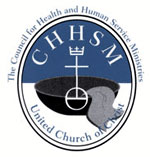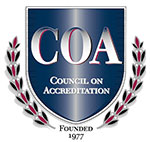PROGRAMS
GET INVOLVED
SUPPORT OUR MISSION

Foster care. Adoption. These two words can invoke a myriad of emotions and questions as to how best care for children who need a place to call home. The US Department of Health and Human Services (HHS), Administration for Children and Families, reported 437,000 children in foster care for fiscal year 2018.1 As 2018, one-third of children entering the US foster care system are young children of color.
Fostering or adopting a child from a different ethnic, cultural, or racial group can present unique challenges. However, the best way to meet these challenges is to acknowledge their existence in an open and honest space. Guest writer, Kirsten Peterson, shares how intentional parenting has set her multiracial family on the road to success.
“The alarm clock rings at five-thirty in the morning. I stretch, say a quick prayer of gratitude, and let my feet hit the floor: off to another day as a single mom of five children. Our day does not run much different than anyone else’s day. Regardless of the color of our skin, or ethnic background, we all get ready for school and work—hustling for last-minute items no matter how prepared the night before. I hug my boys before they walk the three blocks to their public school–a school district I purposefully moved our family into eight years ago. I drive my girls to our chosen high school, and then the local train station for my eldest to take a train into the city for cosmetology school.
Here is where my story is different. I am the parent of a multiracial family. Yes, as a parent of biological children, I am sure I would have looked at schools and churches very intentionally for my children. However, most likely, racial diversity would not have been a priority. I want to give my adoptive children a life where they do not “feel” adopted by conspicuously standing out in the crowd. I want to honor my children’s’ culture and ethnicity— a black daughter and four mixed (my kids’ preferred term).
As a parent, we want our children to share in some of our cherished personal memories. I attended a Catholic school in my youth and wanted the same experience for my eldest daughter. I began looking at schools and quickly realized the schools lacked the diversity I felt would be essential in my daughter’s academic success. I continued searching and found a school that met my expectations. I had to travel outside of my city to enroll my daughter, but it was the best thing I did. Seeing my daughter attend a school with children who looked like her was an enjoyable experience. My daughter flourished in that environment. This experience opened my eyes to a space that I otherwise would neither have known nor experienced.
Honestly, parenting a multiracial family is not much different for me than if I were parenting biological children. I would still be an intentional parent looking for the best fit for my children in school, church, and extracurricular activities. I would have the additional responsibility of ensuring that my racially diverse children are seen and heard in an environment that embraces their uniqueness.”
Interested in helping a child find their forever home through adoption or foster care? For more information, call Jodi Robinson at 618.688.4727 or email at jrobinson@wordpress.compu-type.net.
A special thank you to Kirsten Peterson for sharing her family’s story.
Source:
1US Department of Health and Human Services (HHS). Adoption and Foster Care Analysis and Reporting System (AFCARS) FY2018 data. August 22, 2019. URL: AFCARS FY 2018 Data


